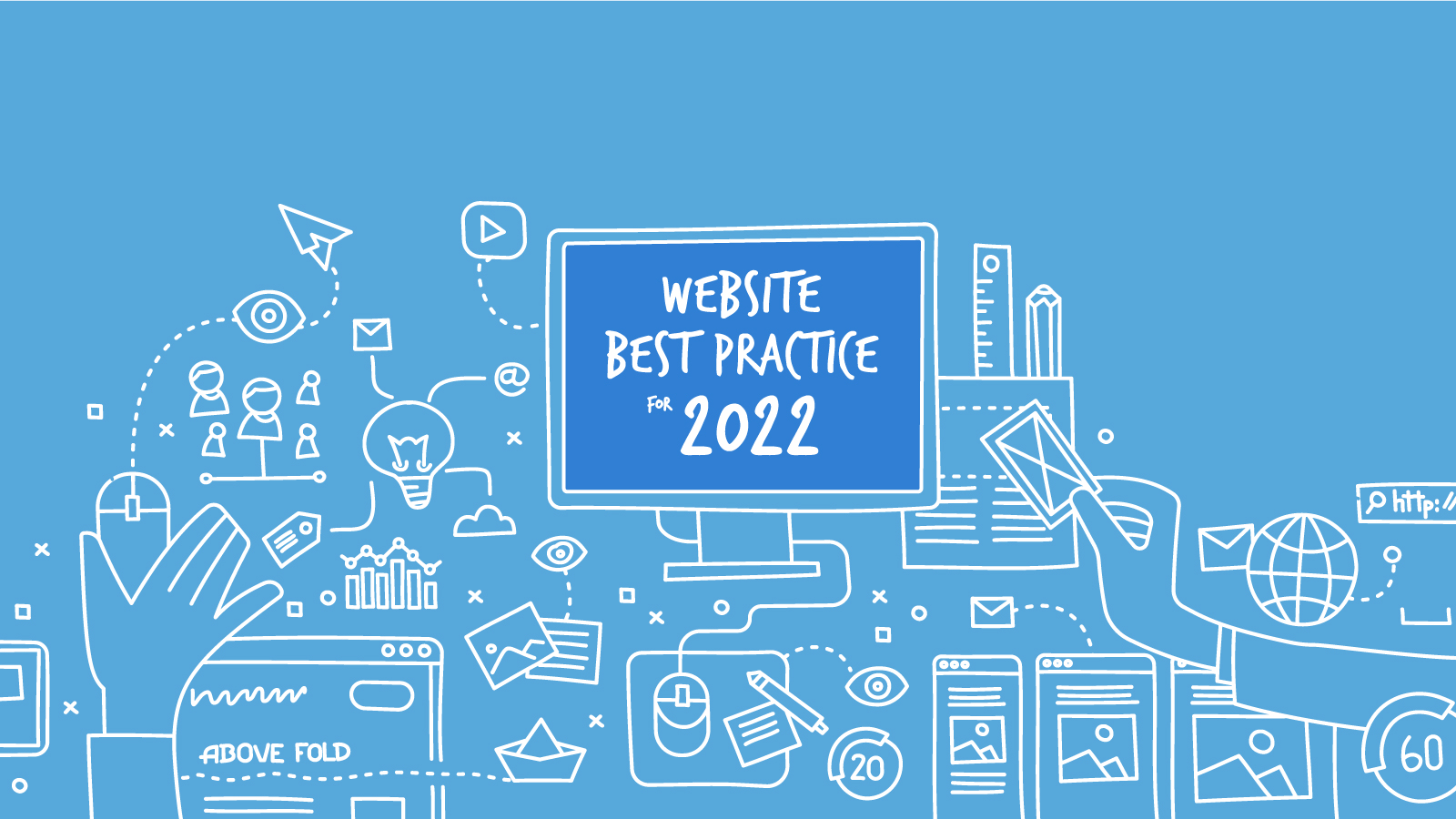There are many elements of a good website. Everything from the design to the user experience counts, not to mention the requirements for optimisation to help search engines find them.
It has become a necessity to have an online storefront, whether you trade online or not, or service the B2B or B2C market. However, ensuring your website is found and satisfies your audience is key, especially when you consider that there are more than 2 billion websites in existence.
One of the key challenges for websites is to provide your audience with the information they seek once they reach your site. Lowering website bounce rates is the goal for many businesses, which can be done when you minimise common mistakes that cause people to leave a website. These include:
- Slow loading
- Non-responsive
- Bad navigation
- Outdated design
- Poor content structure
- Intrusive video/audio
Best Practices for Websites in 2022
Let’s go through the best practices you need to know to have a successful website in 2022.
Responsiveness
According to HubSpot, 93% of people have left a website because it didn’t display properly on their device. When a website doesn’t transition fluidly between desktop and mobile and vice versa, it disrupts the experience. This includes searches performed across different search engines.
The goal is for seamless adaptivity of your website, regardless of the device being used to view it. Creating an unexceptional user experience, therefore, requires compatibility, flexibility in terms of structure, and a constant look and feel across devices.
The ever-growing use of mobile devices for searches cannot be underestimated. Once your website is geared for mobile, it needs to be optimised. Mobile has become the predominant device used for searches, accounting for more than 50% in 2021, according to Statista.
Design
Design is a critical element for websites. It needs to capture the eye and keep the viewer engaged. To do this, there needs to be clear and memorable branding which needs to be applied throughout the site. The colours and contrasts are very important for the aesthetics and affect the users on a psychological level. The design needs to be well laid out and structured to ensure that the viewer has clear pathways that meet their needs.
Having functional menu navigation helps create a seamless experience with reduced friction. Your site should include a hierarchy of value from left to right and a logo that links to the homepage. This will help organise the website and help the user naturally gravitate towards the important elements. The goal is for a complete desired action to be taken.
Testing can help to show which formats and types of content work best. Don’t forget the CTAs - these are important call-outs that help viewers become leads. They need to fit into the website alongside your other visual assets and content.
Simplicity
Websites in 2022 need to be user friendly. Their primary function and usability need to be at the forefront of all decisions, with easy to navigate pathways (much like the site hierarchical elements mentioned above). Ultimately, you want to avoid confusion and provide a simple way for the audience to get everything they need when they visit your site. Many factors affect this, from the colours, typefaces and creative assets, to the actual structure of the site itself. Overall, simplicity is key - there is no need for wordiness on websites. Appearance can overwhelm the viewer and deter them, or enhance and entice the web experience.
To achieve this, complexities need to be removed. To do this, consider cognitive complexity, which can allude to socially perceptive skills, thinking styles that inform responses, and the mental structures used when interacting and shaping perceptions. Human psychology is a crucial element of effective web design in 2022.
There needs to be a plan that informs the design of your website, which takes into account UX, human thought processes, natural journeys, helpful content, and simple messaging. Avoid text-heavy sites. To put it plainly, to improve your website, you need to ensure your audience is front of mind. The website and user experience need to resonate with them.
Optimisation
Optimisation is not just a one-stop shop. It requires continual efforts to ensure the website is geared for success online. The requirements evolve, therefore websites need to be updated on an ongoing basis to meet the current standards and best practices. Optimisation can vastly improve your website and it extends beyond SEO. Following on from the tips above, you will need to optimise the site’s navigation too.
Conventionality
Following convention is important too, since the billions of people who use the internet have become accustomed to certain features and expectations when browsing websites. This can form a base for a business to use before tailoring it to their specific brand and tweaking it using creativity. Conventional websites often include:
- The main navigation at the top or left-hand side of a page
- Placing a logo in the left-hand side corner of a page, with a link that goes back to the homepage
- Having elements like links and buttons move or change colour when hovering over them
- Having a search bar
- Using a shopping cart icon on eCommerce sites with the number of items in the cart displayed, situated on the right-hand side corner
Personalisation
Having and appealing to human desires is crucial when creating bonds with audiences. This needs to be applied to your website, with your unique selling point clearly communicated. This is a space where you can display your business’s integrity, transparency, and ‘personality.’ This is affected by branding and the tone of voice used.
People should be able to look at your website and deduce what you offer, what you stand for, and why you’re in the business - your purpose. Your audience should feel comfortable with the brand and enjoy the experience on your site.
That wraps up our top tips on how to improve your website in 2022. By taking the above into account, you’ll be able to create a website that is designed with your audience in mind, ensuring that they - and the search engines - are satisfied. Websites are powerful platforms and there are many benefits to having a good website, and equally important to note is the extent of the impact a bad website can have.
Looking for more guidance on your digital marketing? Our team is here to help, so contact us today!




